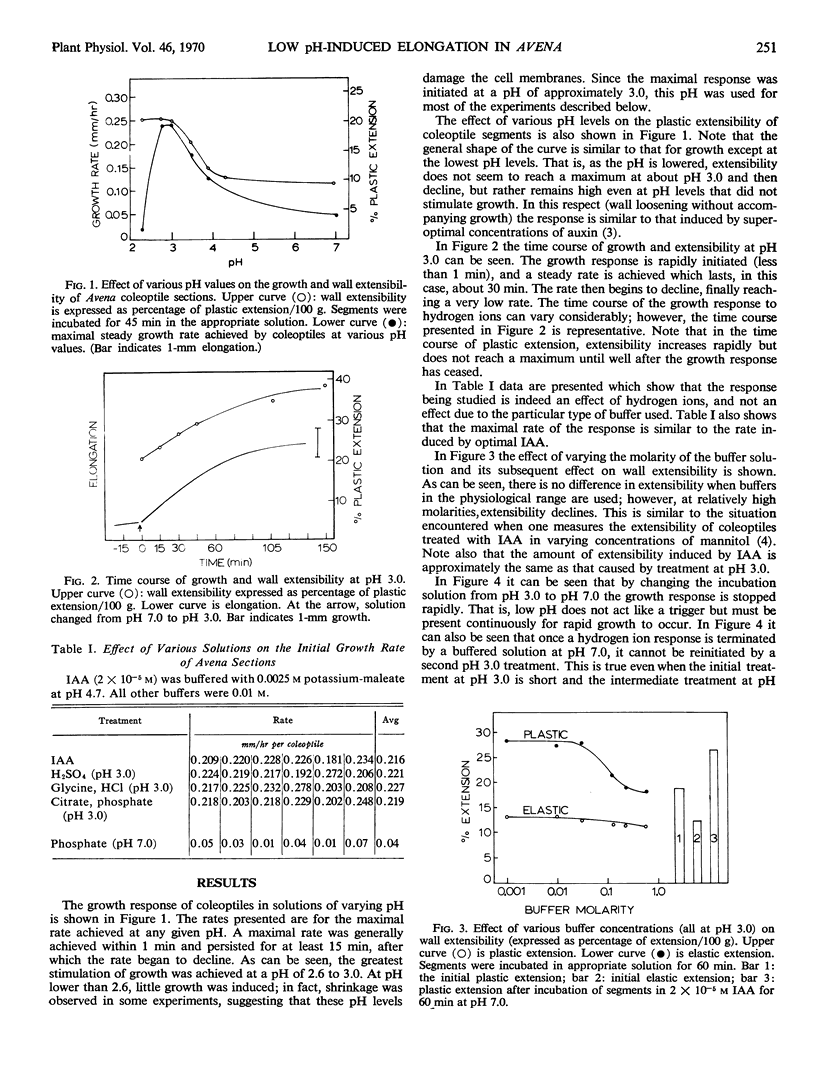Abstract
The ability of low pH and CO2 to induce rapid cell elongation and wall loosening in the Avena coleoptile has been examined with the use of a continuous growth-recording technique and an Instron extensometer, respectively. In particular, the properties of the response to hydrogen ions have been examined in detail and have been compared with the responses initiated by CO2 and auxin. The optimal pH for growth is about 3.0, and both the maximal growth rate and wall extensibility are similar to that produced by optimal auxin. The timing (initiated in less than 1 minute) and duration (up to 2 hours) of the response to hydrogen ions, as well as certain other aspects of the growth and wall-loosening responses, are described. It is shown that the pH response can be clearly separated from the CO2 response. Possible mechanisms for the initiation of the growth response to low pH are briefly discussed.
Full text
PDF



Selected References
These references are in PubMed. This may not be the complete list of references from this article.
- Cleland R. Auxin-induced cell wall loosening in the presence of actinomycin D. Plant Physiol. 1965 Jul;40(4):595–600. doi: 10.1104/pp.40.4.595. [DOI] [PMC free article] [PubMed] [Google Scholar]
- Evans M. L., Ray P. M. Timing of the auxin response in coleoptiles and its implications regarding auxin action. J Gen Physiol. 1969 Jan;53(1):1–20. doi: 10.1085/jgp.53.1.1. [DOI] [PMC free article] [PubMed] [Google Scholar]
- Nitsch J. P., Nitsch C. Studies on the Growth of Coleoptile and First Internode Sections. A New, Sensitive, Straight-Growth Test for Auxins. Plant Physiol. 1956 Mar;31(2):94–111. doi: 10.1104/pp.31.2.94. [DOI] [PMC free article] [PubMed] [Google Scholar]


